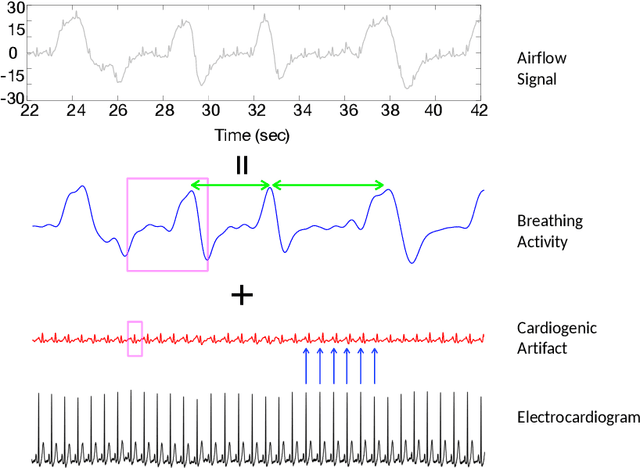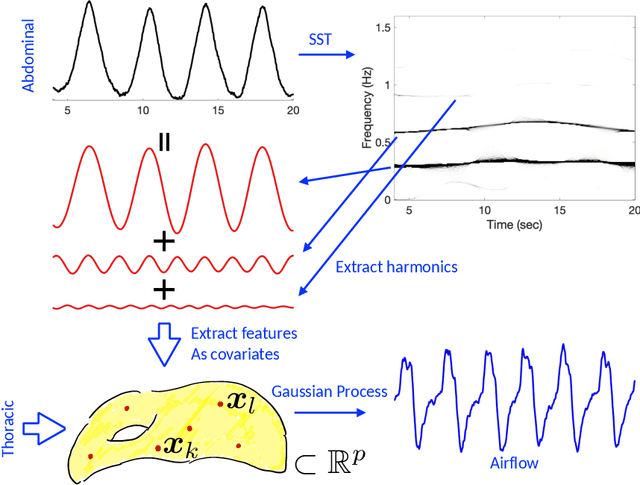Yu-Bo Wang
Airflow recovery from thoracic and abdominal movements using Synchrosqueezing Transform and Locally Stationary Gaussian Process Regression
Aug 11, 2020



Abstract:Airflow signal encodes rich information about respiratory system. While the gold standard for measuring airflow is to use a spirometer with an occlusive seal, this is not practical for ambulatory monitoring of patients. Advances in sensor technology have made measurement of motion of the thorax and abdomen feasible with small inexpensive devices, but estimation of airflow from these time series is challenging. We propose to use the nonlinear-type time-frequency analysis tool, synchrosqueezing transform, to properly represent the thoracic and abdominal movement signals as the features, which are used to recover the airflow by the locally stationary Gaussian process. We show that, using a dataset that contains respiratory signals under normal sleep conditions, an accurate prediction can be achieved by fitting the proposed model in the feature space both in the intra- and inter-subject setups. We also apply our method to a more challenging case, where subjects under general anesthesia underwent transitions from pressure support to unassisted ventilation to further demonstrate the utility of the proposed method.
 Add to Chrome
Add to Chrome Add to Firefox
Add to Firefox Add to Edge
Add to Edge